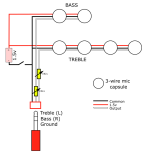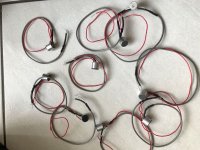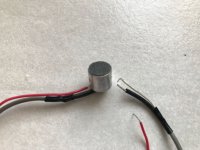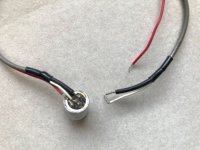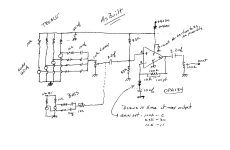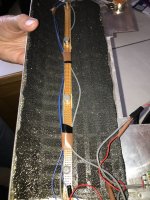My summer holidays are finally here, and one of the things I've been planning to do is fit microphones to my Weltmeister.
Earlier in the year I bought a bag of old stock 3-wire microphone capsules. The seller helpfully provided a note explaining the wiring colour code. I'm thinking to make it very low-key - no volume knobs visible, just the jack socket. I can have a couple of the 'trimming' potentiometers that can be adjusted with a screwdriver inside, but otherwise rely on my amplifier to set the level. Battery can be switched on automatically when the jack is inserted.
First though, can any advise whether I'm on the right track with my circuit? I tried to copy it from my Hohner, but that seems to use 2-wire capsules so has a capacitor and resistor, but I'm thinking that's not necessary?
Earlier in the year I bought a bag of old stock 3-wire microphone capsules. The seller helpfully provided a note explaining the wiring colour code. I'm thinking to make it very low-key - no volume knobs visible, just the jack socket. I can have a couple of the 'trimming' potentiometers that can be adjusted with a screwdriver inside, but otherwise rely on my amplifier to set the level. Battery can be switched on automatically when the jack is inserted.
First though, can any advise whether I'm on the right track with my circuit? I tried to copy it from my Hohner, but that seems to use 2-wire capsules so has a capacitor and resistor, but I'm thinking that's not necessary?


